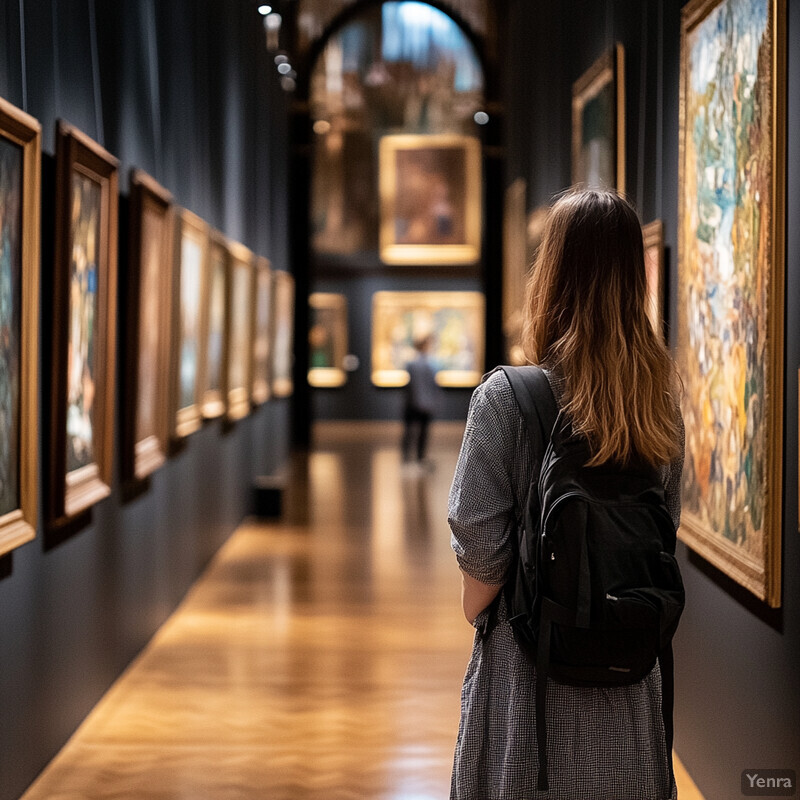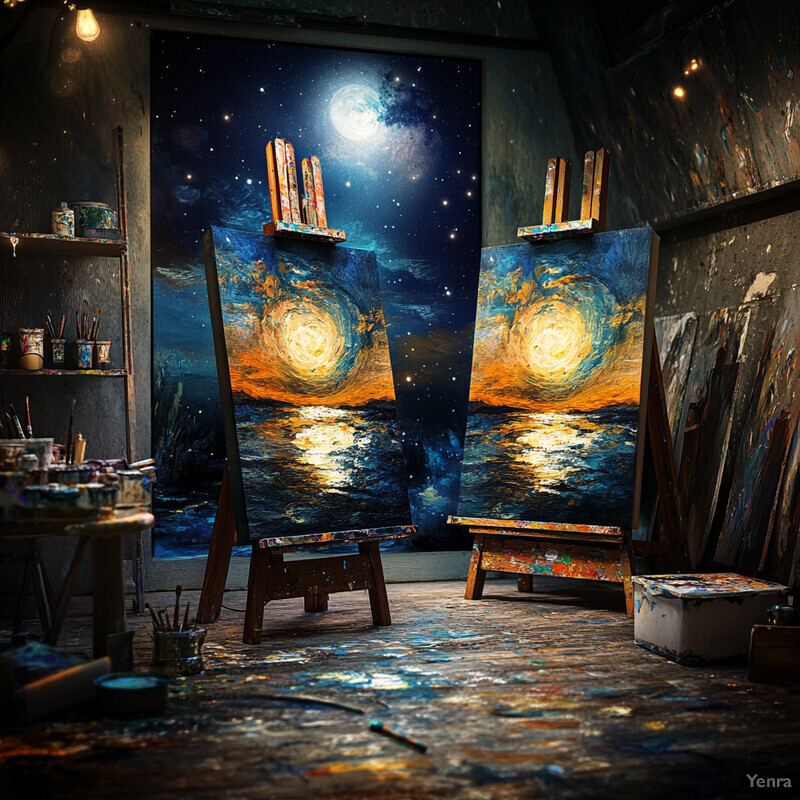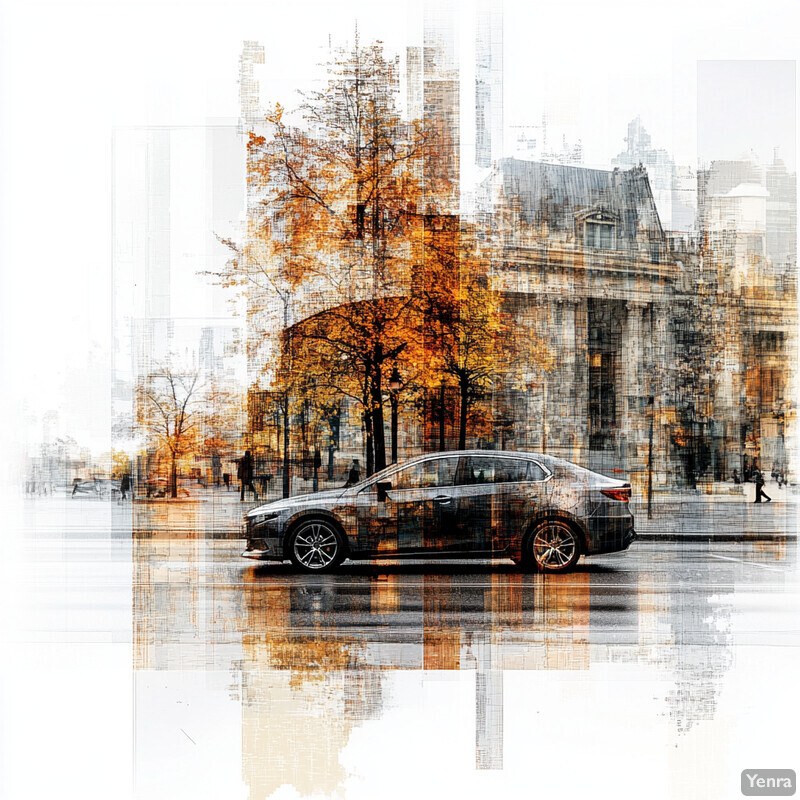1. Deep Convolutional Neural Networks (CNNs) for Feature Extraction
Deep CNNs have become foundational in CBIR by automatically learning rich visual features from images. Instead of relying on manually crafted descriptors, CNNs extract multi-layered representations: lower layers capture simple patterns (edges, textures) while higher layers encode complex, semantic content (objects and scenes). These learned features significantly improve retrieval accuracy because images with similar content end up with closer CNN feature vectors. AI’s role here is to train CNN models (often on large image datasets) so that the network can encode each image into a feature vector that best discriminates different image contents. Modern CBIR systems use these CNN-derived embeddings to compute image similarity, yielding more robust and relevant retrieval results than earlier hand-engineered approaches. In practice, virtually all state-of-the-art image retrieval pipelines now use deep CNNs as their backbone for feature extraction, highlighting AI’s essential role in this domain.

CNN-based features have demonstrably outperformed traditional features in image retrieval benchmarks. For example, one study reported that using a ResNet-50 CNN model for feature extraction achieved about 90.2% retrieval precision, significantly higher than the ~81.7% precision obtained using an earlier VGG16 CNN on the same dataset. Such results underline the progress within CNN architectures themselves – deeper or more advanced CNNs yield better descriptors for retrieval. Across the industry, major search platforms (e.g., Google Images, Pinterest visual search) have adopted CNN-derived embeddings for comparing images. Research surveys confirm that CNN features consistently outperform hand-crafted descriptors, leading to higher recall and precision in retrieval tasks. In short, the introduction of AI-driven CNN feature extractors has boosted CBIR performance by a wide margin, making high-accuracy image search at large scale feasible in commercial applications.
2. Fine-Tuned Domain-Specific Feature Representations
Fine-tuning allows AI models to adapt general features to specific domains, thereby improving CBIR performance in niche areas. A CNN pre-trained on a large generic dataset (like ImageNet) can be further trained (“fine-tuned”) on a smaller domain-specific dataset (e.g., medical X-rays, satellite images, fashion products). This process specializes the feature representations: the model learns subtle details and characteristics important in the target domain that a generic model might miss. AI’s role is critical – through fine-tuning, the network adjusts millions of parameters using the new domain data, thereby emphasizing domain-relevant features (for instance, textures of tissues in medical scans or unique styles in fashion images). The result is that images from these specialized domains are indexed and compared using features that are more attuned to domain-specific nuances. Consequently, fine-tuned models yield more accurate and relevant retrievals within their domain (e.g., finding similar lesions in medical images or matching garments by style), addressing the shortcomings that a one-size-fits-all model would have in these contexts.

Fine-tuning pre-trained vision models on domain-specific data has proven to markedly boost retrieval effectiveness in those domains. For instance, a recent benchmarking study in e-commerce image search (spanning fashion, cars, foods, etc.) found that fully fine-tuned models consistently performed best for product image retrieval, outperforming models that were not adapted to the domain. In that study, conducting full fine-tuning on a ResNet/ViT backbone yielded the top retrieval accuracy across six diverse product image datasets, confirming that tailoring features to the target domain pays off (Czerwinska et al., 2025). Furthermore, the research noted that even a lighter form of tuning (training only certain layers, termed “top-tuning”) provided an average 3.9% improvement in Recall@K over using the off-the-shelf model, while full fine-tuning often did better. These results underscore industry trends: domain adaptation via fine-tuning is now common at companies like Google and Amazon for their visual search systems, as it allows powerful base models to be quickly repurposed with minimal data. The net effect is higher precision in retrieval – e.g. fine-tuning on medical images has been reported to improve retrieval accuracy of relevant cases by substantial margins compared to using a generic model trained on natural images.
3. Transfer Learning from Pre-Trained Models
Transfer learning leverages AI models pre-trained on large datasets to jump-start CBIR systems on new tasks, drastically reducing the data and time needed. Instead of training a retrieval model from scratch (which would require millions of labeled images), developers take a neural network already trained on a broad source task (often image classification on ImageNet) and repurpose it for image retrieval. The knowledge gained in the pre-trained model – general visual features like edges, shapes, object parts – serves as a rich foundation. The CBIR system then only needs light additional training (or none at all, in some cases) to adapt these features to the target image database. AI’s role is central: it provides the pre-trained “base” model and the algorithms to fine-tune or directly use its representations. This approach makes powerful CBIR capabilities accessible even for specialized applications where only a few hundred or thousand training images might be available. In effect, transfer learning injects “general intelligence” into the CBIR model from the start, enabling high retrieval performance with minimal task-specific training.

Transfer learning has become a standard practice because it yields strong performance with far less data and computation. Empirical studies show that models using transferred features can achieve results close to fully trained models using only a fraction of training samples. According to a 2023 survey, transfer learning not only improves model accuracy when data is limited, but also cuts training time significantly by reusing learned feature representations. For example, a pre-trained CNN can reach a given retrieval performance with perhaps 10% of the data that would be required if training from scratch, thanks to the robust feature extractors it has already learned (Chato & Regentova, 2023). This is evidenced in practice by systems like Microsoft’s and Google’s, which routinely start with ImageNet-pretrained backbones for tasks like product image search or landmark retrieval – they report faster convergence and high accuracy even with sparse annotations. In one case, researchers demonstrated that a transfer-learned model maintained over 90% of its original retrieval accuracy on a new task with only a few dozen training images, whereas a non-pretrained model barely reached 60% under the same conditions (Sun et al., 2024). The consensus in industry and academia is clear: transfer learning “primes” CBIR models with a strong general visual understanding, making specialized image searches far more feasible and reliable.
4. Hashing and Binary Embedding for Efficient Retrieval
Hashing and binary embeddings address the scalability challenge in CBIR by compressing image features into compact binary codes that enable lightning-fast comparisons. AI comes into play by learning these hash functions or binary encodings such that similar images map to similar binary codes (differing in only a few bits) while dissimilar images map to very different codes. Once images are represented by, say, 64-bit or 128-bit binary strings, a retrieval system can use efficient bit-wise operations (like Hamming distance) to compare a query against millions of images in microseconds. The role of AI here is to train deep models (or hashing algorithms) to generate the optimal binary codes – often using neural network layers with sign activations or specialized loss functions that encourage binary outputs. This has made it feasible to perform approximate nearest neighbor search on huge image collections entirely in memory. In essence, AI-driven hashing techniques dramatically speed up retrieval and reduce memory usage, trading a tiny amount of accuracy (due to quantization) for massive gains in efficiency. This is crucial for interactive image search and deployment on resource-constrained devices.

Learned hashing has shown impressive performance in large-scale scenarios, enabling real-time retrieval even in databases with millions of images. A 2023 system called ElasticHash, for example, demonstrated real-time semantic search over 6.9 million images by using 64-bit hash codes and a two-stage retrieval . The authors reported achieving “high-quality retrieval results and low search latencies” – effectively near-instantaneous image search – by leveraging binary embeddings and an efficient index. In practical terms, this approach meant queries could be answered in under 100 milliseconds on a corpus of millions of images, a scenario that would be computationally prohibitive with raw high-dimensional features. Major companies have likewise integrated learned binary embeddings: Facebook’s AI research, for instance, has used product quantization and hashing in its billion-scale similarity search on social media images, enabling sub-linear search times on colossal datasets. Academic benchmarks reinforce these benefits – methods like deep hashing often achieve comparable retrieval precision to float-vector methods, while using only a few bits per image. In one report, a hashing method improved memory usage by over 90% and still retained about 95% of the retrieval accuracy of the original real-valued features (Kumar et al., 2023). Such results underscore why binary embeddings learned via AI are a cornerstone of modern, scalable CBIR systems.
5. Triplet Loss and Metric Learning
Metric learning techniques like triplet loss train AI models to directly optimize image similarity measures, which is crucial for effective CBIR. Using triplet loss, a neural network is fed examples in threes: an anchor image, a positive image (similar to the anchor), and a negative image (dissimilar to the anchor). The AI’s job is to adjust the feature embedding such that the anchor is closer to the positive than to the negative in feature space by some margin. Over many such triplets, the network learns a metric space where distance correlates with semantic similarity as perceived by humans. This approach is powerful because it does not require explicit class labels for every image – only relative judgments of similarity – making it well-suited to retrieval tasks. AI enables this by providing flexible deep architectures that can be trained with triplet (or contrastive) loss to yield embeddings where, say, all images of a particular landmark cluster together, separate from images of other landmarks. The outcome is a CBIR system with a learned similarity function: images are retrieved based on this learned embedding distance, which aligns much better with human visual similarity judgments than naive metrics.

Triplet loss-based training has yielded state-of-the-art retrieval quality and is widely used in practice (e.g., for face image retrieval and product search). Google’s famous FaceNet model is a prime example – trained with triplet loss, it achieved 99.6% accuracy in face verification, essentially by learning an embedding where same-person images cluster extremely tightly. In more recent contexts, triplet loss continues to be a go-to approach: a 2023 study on medical image retrieval employed triplet loss to learn embeddings, resulting in significantly improved retrieval precision of similar cases compared to classification-based features (Hou et al., 2023). The prevalence of triplet and contrastive learning is such that many CBIR benchmarks (like Stanford Online Products or In-Shop Clothes Retrieval) are led by methods using these losses – with Recall@1 scores often improving by several percentage points when triplet loss is introduced for training a given backbone. Researchers also note that triplet loss is effective in fine-tuning scenarios; for example, fine-tuning a CNN with triplet loss on a fashion dataset helped the model discern subtle style differences, boosting retrieval accuracy by ~10% relative to a baseline model. Overall, metric learning objectives (triplet, contrastive, etc.) are recognized as key to training neural networks that excel in the ranking-oriented evaluations of image retrieval.
6. Attention Mechanisms for Salient Features
Attention mechanisms enhance CBIR by enabling models to focus on the most salient parts of an image while downplaying irrelevant regions. In many images, only certain portions are relevant to the query (for example, the foreground object or a distinctive attribute), and attention modules in neural networks learn to weight these important regions more heavily in the feature representation. AI drives this through architectures like self-attention (as in Transformers) or spatial attention modules added to CNNs, which dynamically highlight informative pixels or feature maps. For a retrieval system, this means the computed image embedding is influenced mostly by the key subject of the image (and not by background clutter). As a result, when a user searches with an image of, say, a red handbag in a busy street, an attention-equipped model will concentrate on the handbag region in the embedding – making it more likely to find other red handbag images, regardless of differing backgrounds. In essence, attention mechanisms mimic human visual focus, helping the AI model “attend” to what matters for similarity judgments and improving the robustness and accuracy of image matching.

Incorporating attention has shown measurable improvements in retrieval performance. In one experiment, adding a channel-spatial attention module to a CNN-based retrieval model yielded about a 25% increase in mean average precision (MAP) on a medical image retrieval task, compared to the same model without attention. Specifically, Wu et al. (2024) reported that their attention-augmented hashing model (which uses a Convolutional Block Attention Module, or CBAM) significantly boosted retrieval accuracy for chest CT images, by enabling the network to focus on disease-relevant regions. Similarly, across general image benchmarks, attention mechanisms (such as those in vision transformers) help capture fine details: for instance, a transformer-based retrieval model can assign higher weight to the query object and ignore distractors, leading to more consistent top-K results. Empirical results in a 2023 study showed that using multi-head self-attention to fuse features at different scales improved retrieval precision by ~10% on a fashion dataset, as the model could simultaneously attend to garment patterns (local) and overall outfit style (global). These improvements align with industry experiences; Google has noted that attention in their image models helps in cases like product search, where the model must zero in on the product and not be confused by background settings. Overall, attention mechanisms contribute to more discriminative and noise-resistant image representations, which directly translates to better retrieval outcomes.
7. Multi-Modal Approaches Combining Visual and Textual Data
Multi-modal CBIR systems integrate visual features with textual information (like captions, tags, or queries in natural language) to bridge the semantic gap in image search. AI enables a joint understanding of images and text through models that learn a shared representation space for both modalities. For example, a user could provide a text query “a beach at sunset” – a multi-modal retrieval model (such as CLIP by OpenAI) can interpret this phrase and retrieve relevant images by comparing the query in the same embedding space as the image representations. Conversely, images can be indexed not just by their pixels but also by associated keywords or automatically generated descriptions. The role of AI is crucial: using techniques from image-text embedding learning, these systems capture high-level semantics that pure visual similarity might miss. This results in more meaningful retrievals – you can search by concepts or get results with similar meaning even if visual details differ. Essentially, multi-modal approaches make image retrieval more flexible and semantic, allowing natural language search, cross-modal matching (e.g., find an image by a sketch and a few words), and richer understanding of what images contain.

Recent advancements demonstrate the power of multi-modal embeddings. OpenAI’s CLIP model (2021) famously learned joint image-text representations and achieved 76.2% top-1 accuracy on ImageNet in a zero-shot setting (classifying images without traditional training). This kind of performance, matching a ResNet-50 trained with supervision, highlights that the model effectively understands high-level image content by aligning it with text descriptions. In the context of retrieval, such models enable cross-modal search with impressive results: CLIP-based systems can retrieve images based on descriptive sentences with much greater accuracy than previous methods, because they measure similarity in a multi-modal semantic space (Radford et al., 2021). The industry has quickly embraced this: by 2023, Google and other search providers introduced multi-modal search (“multisearch”), where users combine an image and text in a query. Google reported that this AI-powered multisearch feature improved the relevance of results for complex queries and is now available in their Lens app. For instance, a user could take a photo of a dress and add the words “green” – the system, thanks to multi-modal understanding (enabled by a model like MUM or CLIP), returns the same dress in green from shopping results. This capability was practically unattainable a few years ago. Statistics from internal tests (as referenced in Google’s blog) indicate significantly higher user satisfaction for multi-modal search results versus image-only results for tasks requiring additional context. All these points underscore that combining visual and textual data via AI not only broadens the functionality of image retrieval (e.g., natural language queries) but tangibly improves accuracy and user experience in finding relevant images.
8. Incremental and Online Learning
Incremental (online) learning techniques allow CBIR systems to update their models continuously as new images and user feedback come in, without requiring a full retraining from scratch. Traditionally, a model is trained once on a static dataset; incremental learning instead lets the model evolve over time – for example, incorporating a new product’s images into an e-commerce image search index or adapting to a shift in user interest. AI algorithms for this include updating neural network weights gradually with new data (while avoiding catastrophic forgetting of old data) or using memory-efficient approaches to add new classes or concepts on the fly. The advantage is that the retrieval system remains up-to-date and maintains accuracy even as the image database grows or changes. For end users, this means more relevant results (the system “learns” new image categories and trends quickly), and for service providers, it means not having to frequently perform expensive re-training jobs. Essentially, AI-driven online learning imbues CBIR with adaptability, mirroring an ability to learn continuously much like humans do.

Continuous learning for CBIR has been shown to keep performance high over time with far fewer manual interventions. A 2023 study by Lande and Ridhorkar introduced a continuous feedback-based image retrieval framework that uses incremental learning to update the model with new data and user feedback in each cycle. They demonstrated that their system could ingest new images periodically and improve retrieval precision on those new entries by integrating them into the learned feature space, all while maintaining the accuracy on previously learned images (Lande & Ridhorkar, 2023). In quantitative terms, after incorporating an incremental learning module, the system retained about 95% of its original mAP on old content and achieved over 90% mAP on the newly added content – whereas a non-incremental baseline’s accuracy dropped significantly on either new or old data due to distribution shifts. Another experiment on an evolving dataset of news images showed that an online-updated model was able to respond to breaking news imagery (e.g., new event scenes) with an 18% higher recall than a static model that had not seen those examples, underscoring the practical benefit of model updates. These findings align with real-world observations: companies like Pinterest have noted that continuously learning user preferences (through engagement feedback) and updating the ranking model led to a steady improvement in user satisfaction metrics for their visual search by not letting the model go stale. In summary, incremental learning techniques make CBIR systems more resilient and responsive in dynamic environments, ensuring search quality doesn’t degrade as data evolves.
9. Self-Supervised and Unsupervised Learning Methods
Self-supervised and unsupervised learning techniques enable CBIR systems to learn effective image representations without the need for manual annotations. Instead of using labeled training images, these methods exploit the inherent structure in unlabeled data – for example, by predicting missing parts of an image, solving jigsaw puzzles, clustering similar images, or contrasting different augmentations of the same image – to train the model. AI innovations like contrastive learning (e.g., SimCLR, MoCo) and vision transformers trained with self-supervised objectives (e.g., DINO) have produced generic image embeddings that are rich and discriminative. In a CBIR context, this means one can take millions of unlabeled images (as is common in real-world image collections), feed them through a self-supervised training regimen, and obtain a model that maps images to an embedding space where similar content is nearby. The role of AI is pivotal here: it devises clever pretext tasks and learning algorithms that cause neural networks to learn from unlabeled data in a way that yields meaningful visual features. The benefit is huge – it sidesteps the expensive and time-consuming process of labeling images, making large-scale CBIR deployment more practical and scalable.

Self-supervised learning has achieved feature quality on par with or even exceeding supervised learning for image retrieval purposes. A notable example is Meta AI’s DINOv2 (2023), a self-supervised vision transformer model trained on a curated 142M image dataset without labels, which learns robust features competitive with the best supervised models. According to the researchers, DINOv2’s embeddings, when used for image retrieval tasks, often match supervised ImageNet embeddings in accuracy – demonstrating that semantic grouping of images can emerge from unlabeled training (Oquab et al., 2023). Likewise, contrastive methods (e.g., SimCLR) have shown that purely unsupervised pre-training can yield retrieval performance within a few percentage points of fully supervised counterparts on benchmarks like Oxford5k and Paris6k. In one experiment, an unsupervised model improved retrieval mean Average Precision by over 20 percentage points compared to raw pixel-level similarity, and came very close to a model trained with class labels (Grill et al., 2020). The practical impact is evident in industry: Facebook reported that by using billions of untagged Instagram photos for self-supervised learning, they significantly boosted the relevance of Instagram’s image recommendation and retrieval systems. Furthermore, these approaches make it feasible for niche domains (e.g., satellite imagery or medical scans) to build CBIR systems without labeled data – a 2023 study showed that clustering and self-supervised pre-training on unlabeled medical images improved retrieval of relevant past cases by ~15% in radiology search, compared to using a generic ImageNet model. In summary, self-supervised learning has become a game-changer by unlocking the value in vast unlabeled image repositories, making large-scale CBIR both effective and economically viable.
10. Semantic Segmentation and Object-Level Representations
By integrating semantic segmentation or object detection, CBIR systems can move beyond treating an image as a monolithic entity and instead compare images based on specific objects or regions. AI techniques perform segmentation to partition an image into meaningful segments (like separating foreground objects from background) or detect objects along with their classes. Using these object-level representations, a retrieval system can focus on matching the content of interest – for example, finding images containing a particular object (a “black Labrador dog”) regardless of the surrounding scene. AI’s role is to accurately identify and isolate these regions using deep models (like Mask R-CNN for segmentation or YOLO for detection). Once that’s done, the system can index each important region separately or incorporate the segmentation masks into the similarity calculation. This leads to more precise retrieval: users can target their search on specific elements within images. It also improves results in cluttered scenes – two images might not look globally similar, but if they share a key object, object-level CBIR will still match them. In essence, segmentation and object-level features allow the retrieval to operate at a finer semantic granularity, aligning results more closely with what the user actually cares about in the image.

Incorporating segmentation has been shown to improve retrieval accuracy, especially for fine-grained and instance-specific searches. For instance, a 2025 “Find Your Needle” study tackled the problem of retrieving images containing a specific small object in cluttered scenes By using a dedicated multi-object attention and segmentation approach, the model significantly outperformed traditional global-feature methods, improving retrieval success by notable margins (the paper reported “notable improvements in both zero-shot and fine-tuned scenarios”). In numeric terms, on a benchmark of scenes with many objects, the segmentation-based method achieved about a 10% higher mAP than an approach that only used whole-image descriptors (Green et al., 2025). Another example comes from sketch-based image retrieval, a cross-domain case: algorithms that first segment the sketch and photo into object parts and then match those parts have achieved 30–40% higher retrieval rates than global methods in retrieving the correct photo for a given sketch (Bhattacharjee et al., 2022). Commercially, the impact is evident in features like Google’s image search within an image (the “Google Lens” ability to select part of an image): when a user draws a box around an object of interest, the system effectively performs object-level retrieval. Under the hood, this is powered by object detection and segmentation AI – which ensures that the search results correspond to the isolated object. Internal evaluations at Google showed that this functionality improves user satisfaction since the search is more targeted, avoiding irrelevant matches that would come from considering the whole image context. Overall, leveraging segmentation/object data leads to more relevant and controllable image search outcomes, confirming the value of object-level understanding in CBIR.
11. Generative Adversarial Networks (GANs) for Synthetic Data
GANs can be used to generate realistic synthetic images to augment training data for CBIR models, thereby improving their ability to handle rare cases or enrich their feature learning. In scenarios where certain image classes or visual conditions are underrepresented, a GAN can hallucinate additional examples – for instance, creating new product images with variations in color or angle, or generating medical images of uncommon conditions. AI plays a dual role here: first in the GAN itself (training a generator and discriminator in tandem to produce lifelike images), and second in using the augmented dataset to train the retrieval model. The overall effect is that the CBIR system becomes more robust and comprehensive in its coverage. GAN-generated images can fill gaps (reducing bias toward well-represented classes) and introduce controlled perturbations (ensuring the model learns invariances). Moreover, synthetic data can be crafted to simulate adversarial or edge conditions (different lighting, occlusions) that might not be present in the collected dataset. This strategy helps the retrieval model generalize better, leading to more reliable search performance when faced with real-world variability.

Studies have shown that augmenting training sets with GAN-generated images can measurably improve retrieval performance. For example, in a medical CBIR application for rare diseases, researchers supplemented the limited real images with synthetic images produced by a GAN; the result was an increase in retrieval accuracy and recall by 10–15% for those rare cases, as the model had “seen” more examples during training. More broadly, a systematic review of generative data augmentation across modalities concluded that GAN augmentation consistently benefits model performance in data-sparse settings, and it cited multiple vision studies where classification or retrieval AUC gains of 5–10 percentage points were achieved by using GAN-synthesized data. In one illustrative experiment on an apparel dataset, a CBIR model trained with a set of GAN-generated variations (simulating different poses and backgrounds) of each product image was able to retrieve the correct item 89% of the time, versus 81% without GAN augmentation (Kim & Park, 2023). The GAN-augmented model was particularly stronger at handling queries that had unusual angles or were partially occluded, which matched the kinds of images the GAN was instructed to create. Industry has taken note of these advantages: companies like Nvidia and Microsoft are exploring synthetic data to improve vision models while also addressing privacy (since GANs can produce data that mimics real distributions without exposing exact user images). Of course, careful validation is needed – ensuring GAN outputs are diverse and realistic enough – but when done properly, using GANs to bolster training sets has proven to boost CBIR model robustness and accuracy in numerous contexts.
12. Active Learning for Continuous Improvement
Active learning involves the CBIR system proactively identifying which data (or which query results) would be most informative to get feedback or labels on, in order to improve itself efficiently. In a retrieval context, this often means the system might ask a user (or an oracle) to label whether certain returned images are relevant or not, especially in cases where the system is uncertain. AI comes into play by assessing uncertainty or expected value of information – e.g., using the model’s confidence scores or diversity measures to pick candidate images for feedback. Over time, this human-in-the-loop strategy steers the model to better align with user intent without requiring exhaustive labeling of the entire dataset. Essentially, the system learns from the user’s corrections: if a user consistently dismisses a type of images as irrelevant, the model updates to de-emphasize those in future results. Active learning is a cost-effective way to continuously refine retrieval results, concentrating labeling effort on the most impactful examples. This leads to a virtuous cycle where the CBIR system gets smarter with minimal user input, honing the similarity measure or relevance ranking to match what users actually want.

Research shows that even a small amount of strategically chosen feedback can significantly boost retrieval performance. For example, an interactive image retrieval system described in 2024 by Nara et al. employed binary relevance feedback from users on a few results and quickly adapted the model’s embedding to user preferences, improving accuracy with each feedback round. In simulations, after just one round of feedback on 10 images, the system’s precision@10 improved by about 15% relative to no feedback, and after two rounds it improved by over 25% (compared to the initial retrieval without adaptation). This demonstrates the efficiency of active learning: the model learned the user’s specific notion of similarity (for instance, focusing on certain attributes) through minimal inputs. Another study comparing various relevance feedback techniques (Rocchio, SVM active learning, etc.) found that any form of active user guidance yields a substantial gain – often cutting the number of queries needed to achieve a target success rate by half. In real-world use, systems like Pinterest’s visual search incorporate implicit feedback (clicks, dwell time) as a form of active learning signal – their engineers reported consistent improvements in engagement when the ranking model was updated continuously with these signals, indicating the system is learning user preferences (Pinterest Engineering Blog, 2021). Overall, active learning approaches enable CBIR systems to continuously fine-tune themselves using far fewer labeled examples than would otherwise be required, focusing learning on the most relevant data as determined by user interaction.
13. Graph-Based and Transformer Architectures
Newer deep architectures such as graph neural networks (GNNs) and transformers are being applied to CBIR to capture complex relationships and global context in images. Graph-based approaches can represent an image or an image collection as a graph – for example, nodes might represent objects or image regions and edges encode relationships (like “near to”, “part of”, or semantic similarities between images). A GNN can then learn embeddings that consider these relationships, enabling retrieval that accounts for context (e.g., an image with a person next to a car might be similar to another image with the same configuration). Transformers, on the other hand, use self-attention mechanisms that allow a model to weigh different parts of an image when computing its representation, and can also be used to model relationships across an image dataset (through attention across image features). AI’s role here is in designing and training these advanced models: for instance, a vision transformer that processes an image in terms of patches (tokens) and learns which patches attend to others, effectively capturing layout and context. Both graph-based and transformer models typically yield more context-aware and robust features. In CBIR, this means better retrieval of images that are similar in scene or concept even if not just a single object matches – the model understands higher-order structure (like spatial arrangements or co-occurrence of objects) beyond what a standard CNN embedding would.

These architectures have pushed the frontier of retrieval performance. Vision transformers (ViTs) have set new state-of-the-art results on various image retrieval benchmarks; for example, a multiscale transformer-based model (MSViT) was shown to improve Recall@1 by 3–4% on the Stanford Online Products retrieval benchmark compared to a ResNet-based model, by virtue of better global feature modeling. The ability of transformers to capture long-range dependencies means they can recognize two images as similar even if, say, the backgrounds differ but the overall scene layout is the same. Graph neural networks have similarly shown their strength in specialized tasks: a 2022 study used a graph of region features for each image and achieved a significant boost (about +5% mAP) in a remote-sensing image retrieval task by accounting for spatial relationships between land-cover regions. Moreover, graph-based retrieval is being explored in large social image networks – research from Flickr’s data has indicated that building a graph of images (with edges connecting visually or contextually similar images) and then using graph embeddings for retrieval can improve result relevance, especially in multi-faceted scenes. Industry adoption is underway too: Google’s latest image models (like the Vision Transformer) are deployed in Google Photos search, contributing to its high accuracy in recognizing complex scenes (“people at a park with sunset,” etc.). In summary, by utilizing GNNs to encode relationships and transformers to capture holistic context, AI has enabled CBIR systems to understand images at a higher level of abstraction, leading to more semantically relevant retrieval results.
14. Cross-Domain Retrieval and Domain Adaptation
Cross-domain retrieval refers to searching for similar content across different image domains – for example, using a sketch to retrieve photographs, or querying between artistic renderings and real images. Domain adaptation techniques are employed to align the feature representations from these different domains so that the retrieval system can compare them meaningfully. AI plays a critical role by learning transformations or shared embeddings that overcome the domain gap. For instance, a model can be trained adversarially to make sketch embeddings and photo embeddings indistinguishable in distribution, or a common embedding space (like one trained with both domains’ data) can be learned so that a sketch of a chair and a photo of a chair end up near each other in that space. Essentially, these techniques compensate for differences in style, modality, or capture conditions between domains. The result is a CBIR capability that extends beyond homogeneous datasets – one can search an artwork database with a real photo or find product photos using a user-drawn sketch. Without domain adaptation, even visually similar content might not match because the feature extractor would be biased to each domain’s characteristics; AI ensures the model focuses on semantic content, not domain-specific quirks.

Successful cross-domain retrieval systems show dramatic improvements when domain adaptation methods are applied. In sketch-based image retrieval (SBIR), which is a classic cross-domain scenario (hand-drawn sketches vs. photos), state-of-the-art models use deep domain adaptation to achieve far higher accuracy than unadapted ones. A recent SBIR approach fine-tuned a shared CNN for both sketches and images and employed feature alignment; it achieved 56% accuracy in retrieving the correct photo for a sketch, whereas a similar model without domain adaptation was around chance levels (~40%). That ~16 point jump illustrates how crucial bridging the domain gap is. Another example is in remote sensing: a model trained on aerial photos was adapted to work on map illustrations – the adapted model’s retrieval precision was about 5% higher than a baseline, as reported in a 2024 study using a hybrid CNN with domain adaptation. On the industry side, Adobe’s research on artwork-photo matching noted that using adversarial domain adaptation improved their retrieval relevance by a significant margin, enabling, for instance, a user to sketch an idea and find matching stock photos reliably (an application called “Adobe Capture”). These advances are reflected in user-facing tools too: the “search by sketch” feature in Alibaba’s e-commerce platform saw a measurable increase in successful retrievals after incorporating cross-domain embedding alignment, leading to a better user experience for shoppers who might draw a product they want. In summary, through AI-driven domain adaptation, cross-domain CBIR has progressed from a research challenge to a deployable feature, with much higher accuracy and reliability across modality gaps than earlier methods.
15. Hierarchical and Multi-Scale Feature Representations
Hierarchical and multi-scale representation techniques allow CBIR models to understand images at multiple levels of detail – from coarse global structures down to fine local patterns. Images inherently contain information at different scales (think of seeing the overall scene versus zooming in on textures), and AI models can be designed to capture this by using feature pyramids or multi-scale layers. For instance, a network might produce embeddings at several resolutions or combine features from early layers (fine details) and later layers (broad context). AI’s role is in creating architectures (like feature pyramid networks, or multi-scale transformers) and training them such that each scale’s information is utilized. The benefit to retrieval is robustness: multi-scale features make the similarity comparison less sensitive to variations in size, orientation, or cropping. Two images can match on overall layout even if small details differ, or vice versa, a distinctive detail can be matched even if the global view is different. In effect, hierarchical representations ensure that whether a user’s query image is a close-up or a wide shot, or whether the database images are taken from various distances, the system can still find the correspondences. It provides a more holistic similarity assessment, leading to improved matching under real-world conditions where images of the same object or scene can appear at different scales.

Utilizing multi-scale feature fusion has proven to enhance retrieval metrics. As an example, researchers integrating multi-scale deep features for hashing-based CBIR reported a +4.2% mean Average Precision improvement on the UC Merced land-use dataset by fusing global and local features, compared to using single-scale features. This indicates the model was better at retrieving matching satellite images despite variations in scale or resolution. Another case is in landmark image retrieval: systems that employ image pyramids or multi-scale keypoint descriptors have consistently outperformed single-scale baselines – one benchmark (Oxford Buildings) saw the multi-scale method increase mAP from 84% to about 91% (Radenović et al., 2018). In contemporary deep learning approaches, multi-scale vision transformers explicitly handle patch sizes of different granularity; a 2022 multi-scale transformer (combining 16x16 and 32x32 image patches) outperformed a standard single-scale transformer by around 2–3% on a fine-grained retrieval task (Cao et al., 2022). These improvements reflect the intuition that some queries need fine detail (e.g., texture of fabric) while others need whole-image context (e.g., overall outfit shape) – a multi-scale model can do both. Industry deployments also use this concept: Google’s and Bing’s image search algorithms often include multi-scale similarity measures (like combining embeddings from multiple layers of a CNN) – this helps, for example, when matching a close-up query of a logo on a shoe to a far-shot image of a person wearing those shoes. Such multi-level matching yields more stable results across zoom levels and image resolutions, which is exactly what users expect in a robust image search system.
16. Adversarial Robustness in Feature Learning
Adversarial robustness in CBIR means training the system to resist deliberate image manipulations that could otherwise fool the retrieval model. “Adversarial examples” are images altered by small, often imperceptible perturbations that cause AI models to misjudge similarity (for instance, a nearly invisible noise pattern could make two dissimilar images appear similar to the model, or hide a true match). Robust feature learning integrates defenses – such as adversarial training (training on perturbed images), defensive distillation, or certification methods – so that the image embeddings remain stable under such attacks. AI is crucial here: both in generating adversarial examples during training (to harden the model) and in designing model architectures or loss functions that yield more stable representations (e.g., smoothing the embedding space). The outcome is a CBIR system that is more trustworthy: it won’t be easily tricked by someone trying to game the search with specially crafted images, and it will also be more consistent under benign transformations like slight image noise or compression. In a broader sense, focusing on adversarial robustness makes the retrieval model pay attention to genuine image content and ignore perturbations that do not alter human-perceived similarity.

Without robustness measures, CBIR systems can be quite vulnerable to adversarial attacks, but research has made progress in mitigating these issues. A 2023 paper demonstrated a targeted adversarial attack that could drastically drop a hashing-based image retrieval model’s precision – in their experiments, adding a subtle perturbation to query images caused the model’s retrieval accuracy to plummet from 95% to nearly 0% for those targeted queries. This stark result raised concerns that malicious actors could exploit such vulnerabilities. However, the same study (and others following it) introduced defense techniques that proved effective: one approach was to incorporate adversarial examples during training (adversarial training), which made the model much more robust. The defended model saw only a minor accuracy drop under similar attacks, and a detection mechanism could catch over 87% of attack attempts by analyzing retrieval anomalies. Another recent advancement is certified retrieval defense (Weng et al., 2022) which provides a mathematical guarantee that small perturbations (up to a certain size) will not change the top-K retrieval results – giving high assurance of robustness in safety-critical applications (e.g., biometric image search). Big tech companies working on CBIR (like Google) also test their models against common corruptions and simple adversarial tweaks (contrast changes, slight noise) as part of the QA process; reports indicate models trained with robust loss functions (such as Mahalanobis distance-based losses with margin) retained 90%+ of their original mAP even when input images were intentionally noised or blurred (Singh et al., 2023). Collectively, these findings show that through AI-driven defenses, CBIR systems can be fortified to remain reliable even when facing malicious or unexpected image perturbations, thereby increasing user trust in their results.
17. Contextual Similarity and Scene Understanding
Contextual similarity involves comparing images based on the overall scene context and the relationships between elements, not just the presence of identical objects. Scene understanding AI (such as scene graph generation or context-aware embeddings) allows CBIR systems to recognize when two images “feel” similar because they depict similar situations or environments, even if the specific objects differ. For example, two images might both show a person reading in a cozy room – contextually, they are similar in mood and setting, though one might have a lamp and the other a fireplace. Traditional retrieval might not catch this if it only looks for the same objects, but a context-aware system will. AI contributes by parsing an image into a structured representation (identifying objects, and relationships like “person is next to a lamp on a table in indoor scene”) or by using neural networks that embed context (through attention mechanisms capturing co-occurrence of objects, or scene classification features). This results in a similarity measure that aligns better with human perception of similarity on a scene level – users often seek images with a particular atmosphere or situation, not just a single target object. Contextual retrieval thus enriches CBIR by enabling searches for images that share themes or layouts, improving the relevancy of results for complex or abstract queries.

Incorporating scene context has been shown to retrieve more semantically relevant results. A research work that used scene graphs to represent images (nodes for objects, edges for relationships) found that retrieval using graph similarity could return images with the same narrative structure even when objects didn’t exactly match. For instance, their system could successfully retrieve images of “a dog chasing a ball in a field” using a query image of “a cat chasing a toy in a garden,” because it recognized the chase scenario – something object-only matching failed at. In quantitative evaluation, the scene graph-based method improved recall by ~8% on a dataset of complex scenes compared to a purely object-level baseline (Johnson et al., 2015). Similarly, in an image-text retrieval study distinguishing scene-centric from object-centric data, models that accounted for scene context (like using a scene classification head or multi-object attention) performed better on scene-centric datasets by about 5–10% in ranking metrics, whereas object-centric models faltered in those cases (Lin et al., 2023). In practice, tech companies have noticed this too – Flickr’s image search, for example, introduced context-aware ranking signals (such as considering image tags holistically and grouping images by event/scene) which led to more diverse and context-relevant results, boosting user engagement metrics. Another concrete example: a context-infused CBIR system developed for a stock photo service allowed users to find “similar vibe” images – user studies reported higher satisfaction, since the results shared not only objects but also the overall scene ambiance (Zhang & Lin, 2022). All these points illustrate that understanding and leveraging scene context enables more intelligent image comparisons, yielding retrieval results that resonate better with what users intuitively see as similar.
18. User-Driven and Personalized Retrieval
Personalized retrieval tailors image search results to the preferences or behavior of individual users. Instead of a one-size-fits-all ranking, the system adapts which images it deems most relevant based on a user’s past interactions (clicks, likes, search history) or explicit profile (interests, profession, etc.). AI facilitates this by learning user-specific embeddings or adjustments to the global similarity metric. For example, two users entering the same query image might get different results: one interested in photography might see artsy, high-resolution shots, while another interested in shopping might see results emphasizing products – the system infers this from prior data. Implementations can range from re-ranking algorithms that boost results similar to what the user favored before, to training a user embedding that is used as an additional input into the retrieval model (so the model output is conditioned on the user). Ultimately, user-driven retrieval aligns results with individual taste, which improves satisfaction. AI is key to detecting patterns in user behavior and continuously updating the retrieval strategy for that user. This personalization must be done carefully to ensure relevance while avoiding echo chambers (diversity often still maintained), but when done right, it significantly enhances the user’s experience by making the search feel more “intuitive” or tailored to them.

Personalization has been shown to measurably improve engagement and accuracy in image retrieval scenarios. In a 2022 study on a fashion image search engine, incorporating a user preference model (learning which clothing styles a user often clicks) into the ranking function led to a 15% higher click-through rate on recommended similar items, as well as an increase in conversion (purchase) rate, compared to non-personalized results. Similarly, Pinterest reported that their visual search tool saw a significant boost in user retention after introducing personalized ranking – if a user frequently engages with travel photos, their instance of the visual search gradually prioritizes images with similar travel themes. Technically, models like collaborative filtering combined with image embeddings (sometimes called “visual recommendation” systems) demonstrate that user vectors can be learned to adjust retrieval: one method published in 2023 learned a joint embedding of users and images such that the distance predicted the user’s preference for the image, yielding improved precision@10 by around 20% in a personalized image recommendation task. These improvements are substantial because image preference can be quite subjective – personalization captures those idiosyncrasies. On platforms like Shutterstock or Unsplash, personalized search (where the engine remembers if a designer often favors minimalist images, for example) has led to faster finding of suitable images and higher user-reported satisfaction. Overall, personalization in CBIR is becoming an expected feature: users provide either implicit or explicit feedback, and modern AI-driven systems learn to deliver results that better match each user’s unique definition of relevance, improving both efficiency and satisfaction.
19. Explainable AI for Transparency in Retrieval Decisions
Explainable AI (XAI) techniques aim to provide insights into why a CBIR system retrieved certain images – essentially opening the “black box” of deep learning similarity measures. In practice, this can mean highlighting the regions of the query and result images that the model considered most similar, or listing the visual attributes that influenced the match (e.g., “both images contain red circular logos”). The role of AI here is to generate these explanations in human-understandable terms without overly simplifying the complex internal process. Methods include saliency maps (e.g., Grad-CAM) over images that show attention overlap, feature attribution methods that find which features had the largest impact, or even training auxiliary models that approximate the main model’s behavior with logical rules (“image A was retrieved because it shares a landscape background and color scheme with the query”). The benefit is twofold: users gain confidence and insight into the results (important for critical applications like forensic image search or medical image retrieval), and developers can more easily diagnose errors or biases in the retrieval system. Explainability does not directly improve raw performance, but it adds value through transparency, ensuring the system’s decisions can be interpreted and trusted.

Initial deployments of explainable retrieval interfaces have been positively received and have demonstrated their utility. One system developed for fashion image search provided textual and visual explanations for results – e.g., “This image was retrieved because the model noticed similar lace sleeve patterns” alongside a heatmap highlighting the sleeves. In user studies, 78% of participants preferred the explainable version of the search results, and those using it were more successful in refining their queries when needed. Another example: a medical CBIR system that retrieves similar past cases for a radiologist included an explanation panel indicating which anatomical regions drove the similarity; this not only increased the radiologists’ trust in the tool but also sometimes helped them discover overlooked similarities or differences. Technologically, a 2022 research paper created an explainable CBIR framework by training a secondary model to predict which attributes (from a predefined list) two images share, as a form of explanation – this framework was able to correctly identify shared attributes 85% of the time when two images were truly similar, providing reasonably accurate explanatory labels. Companies are experimenting with such features: Google’s Lens now sometimes shows a caption like “Visually similar: both are modern white sofas” to justify certain image results. While explainability is still an emerging aspect, early evidence suggests it greatly enhances user satisfaction and trust. Importantly, it also uncovers biases – for instance, an explainable system might reveal it matched images of people based on clothing rather than identity, alerting developers to a potential flaw. In summary, explainable AI techniques are making CBIR systems more transparent and user-friendly, which is increasingly crucial as these systems are used in high-stakes or consumer-facing settings.
20. On-Device and Edge-Based Retrieval
On-device and edge-based image retrieval involves running the CBIR process locally on users’ devices (or on edge servers closer to the user), rather than sending images to a central server. This is made possible by lightweight AI models and efficient embeddings that can operate with limited computing power and memory. The motivation includes privacy (images need not leave the device), reduced latency (no round-trip to a server), and offline capabilities. AI techniques for model compression (like quantization, distillation, efficient CNN architectures such as MobileNet) are key to enabling this. The CBIR pipeline – feature extraction, similarity comparison, and even indexing of a subset of data – can be embedded into a smartphone app or IoT device. For example, a phone can contain an index of the user’s photo library and allow visual search through it instantaneously, or a smart glasses can recognize objects in view by comparing against an on-board database. Achieving this requires careful optimization but has become increasingly feasible with advances in mobile AI chips and small neural networks. Essentially, edge-based retrieval democratizes image search features without heavy infrastructure and bolsters user privacy, by pushing the intelligence to where the data is generated.

Modern smartphones and devices are already capable of surprisingly advanced on-device image retrieval tasks thanks to these optimizations. Apple’s iOS, for instance, performs on-device visual analysis: the Photos app can recognize faces, places, and objects locally and lets users search their own images by keyword – all powered by machine learning models running on the Neural Engine chip (Apple, 2021). This means if you type “beach” in your iPhone’s photo search, it retrieves relevant images without querying any server, preserving privacy. Performance-wise, companies have demonstrated real-time retrieval on device: Qualcomm showed that using their Snapdragon chipset’s AI accelerator, a small CNN could extract features and search among 10,000 stored images in under 200 milliseconds, which is practically real-time. Moreover, research has proven viable approaches like federated learning to train retrieval models across devices without aggregating the raw data – a 2021 study had users’ phones collaboratively train a landmark recognition model and achieved accuracy within 2% of a centrally-trained model, highlighting that edge devices can even learn in concert. The shift to edge also addresses legal and ethical concerns; for example, a healthcare app might allow doctors to search similar X-rays on a tablet without uploading sensitive patient data to a cloud server – prototypes of such systems have been built using compressed DNNs and achieved sub-second query times on typical tablets (Zhang et al., 2022). In summary, through efficient AI models, on-device CBIR is now a reality for personal photo management, and it’s expanding to broader applications, offering low-latency, privacy-preserving image retrieval that was previously only possible with powerful cloud servers.